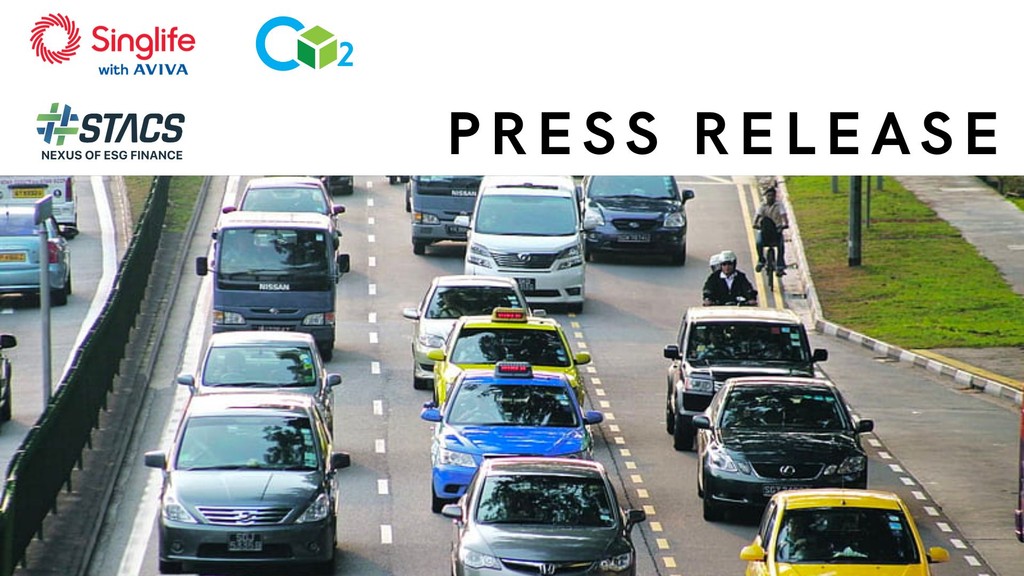Singlife with Aviva, a leading homegrown financial services company, today announces that it is partnering CO2 Connect (CO2X), an inclusive one-stop sustainability platform for carbon emissions tracking, to develop new green motor insurance for electric vehicles.
Singlife will leverage CO2X’s data tracking and analytics capabilities to publish policyholders’ sustainability reports on ESGpedia, which powers the ESG Registry of the Monetary Authority of Singapore’s (MAS) Project Greenprint, built by Hashstacs Pte Ltd (STACS). Using this information obtained with consent from insurance policyholders, Singlife will be able to efficiently develop and better structure new motor insurance policies by accurately assessing and monitoring environmental impact and costs.
ESGpedia tracks data including fuel consumption, carbon emissions, and carbon intensity. It also provides benchmarkings against industry standards, as well as overall levels of carbon savings, which provide enhanced visibility to companies who are looking to track their sustainability performance and carbon footprint. Financial institutions will also be able to access this data and use it to develop greener capital financing solutions which can help in the formulation of data-driven emission reduction strategies.
As part of this initiative, Singlife will insure a fleet of six electric vehicles under EVFY Pte Ltd, an environmentally friendly, last-mile logistic solutions company and subscriber to the CO2X platform in the initial phase. Singlife will independently assess all captured carbon data and monthly emissions reports for each insured vehicle, as it looks to expand its motor insurance offering to other electric vehicle fleet operators.
Chia Ko Wen, Head of Sustainability, Singlife with Aviva said: “Announcing our collaboration with cutting-edge industry partners such as CO2 Connect and ESGpedia is testament to the hard work that many have undertaken to transform the transportation and logistics industry into one that is sustainable, ethical, and aligned with Singapore’s wider environmental goals. Our ambition is not just focused on helping our valued clients find better ways to manage their financial and sustainability targets ethically, but to do so in a data-driven and seamless way.”
Benjamin Soh, Managing Director at STACS, Co-Founder at CO2X said: “The transportation sector’s overall carbon footprint is about 15% of the country’s carbon emissions. With the Singapore Green Plan 2030 envisioning a cleaner and greener Singapore as well as the drive to Net Zero by 2050, there is a dire need for the sector to make drastic cuts to its current GHG emission levels. We are excited to partner with Singlife and Aviva via CO2X and ESGpedia platform to jointly enable businesses in the transportation sector to transit to carbon neutrality with better data, carbon reporting, and lower insurance rates.”
Angie Koh, Chief Operating Officer, EVFY PTE LTD said: “EVFY specialises in green logistics, and we recognise that it may not be easy for companies to do so. While we are adept in infusing EV deliveries, Green Warehouses and other sustainable practices into their operations, it is encouraging to have Singlife and CO2X support us in quantifying our impact. For instance, utilising CO2X data reports on our EV usage to pilot Singapore’s first green motor insurance program by Singlife will go a long way to prove that sustainable mobility is financially and operationally feasible in Singapore.”
The collaboration follows the signing of a Memorandum of Understanding in October 2021, between industry and association leaders in the financial services, transport and logistics sectors, with support from the MAS, Enterprise Singapore and the Singapore Logistics Association.
The partnership between Singlife, CO2X, and ESGpedia will establish a precedent for cleaner, greener products in the transportation and logistics sector. This will pave a clear path forward for companies looking for a better way to sustainability.
This article was originally published by stacs.io on Nov 01, 2022. To view the original article, click here
